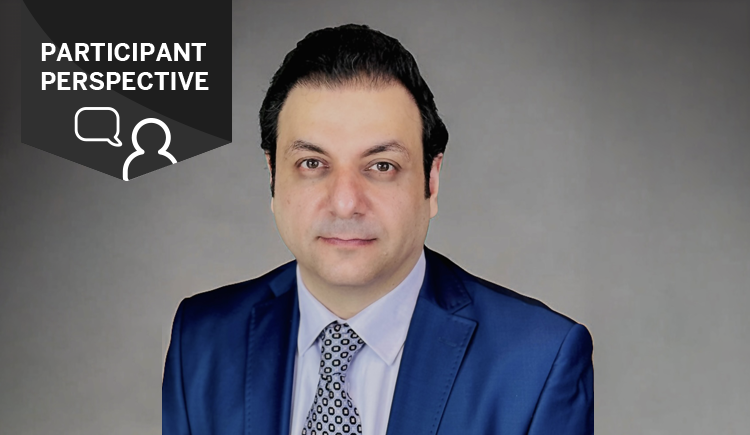
The last two years have required making sudden adjustments in response to COVID-19, social issues, and tensions. To move forward on these complex challenges demands new stretches in our capacity and invites us to grow at the frontier of our competence. For that, we need new tools, frameworks, and solutions explains Rosi Greenberg, speaking to a workshop at the Surgical Leadership Program. Greenberg teaches on leadership and executive education topics at Harvard University and at the organizations KONU and Drawn to Lead.
What is Leadership?
It is accepting responsibility for enabling others to achieve shared purpose in the face of uncertainty, according to Greenberg’s mentor, Marshall Ganz, a lecturer at the Harvard Kennedy School.
“The face of uncertainty is key. That is why we need this type of leadership today,” Greenberg said. Leadership has changed over the past many years from a technical process to something much more adaptive involving figuring out how to help people deal with uncertainty. Greenberg believes that seeing “uncertainty” in the definition of leadership is a positive because one does not have to have the answers. “In fact, as the leader in an adaptive situation, you can't solve it yourself. You need to help your group make progress—that is all you can do, and that is a success.”
Addressing Varying Types of Challenges
“We thrive by addressing the problems that arise in the life of our groups, whether it’s an organization, community, patient or institution,” says Greenberg. “But we need to think carefully about the nature of the challenge we are facing.”
In his seminal work on adaptive leadership, Ron Heifetz of the Harvard Kennedy School distinguishes between adaptive and technical challenges, which Greenberg shared. Distinct types of challenges need different approaches.
Technical Challenges:
- The problem is known, easy to identify, and often recognizable based on experience
- Similarly, the solution is known based on experience and expertise
- The locus of responsibility is with experts and authorities
- Obstacles are usually resource-limited, i.e. time and money
Adaptive Challenges:
- The problem is often unknown or hard to identify; tied to deeper patterns or dynamics and requires learning
- The solution is unknown, which again requires learning
- Responsibility is with those affected by the challenge (stakeholders), including authorities
- The obstacles are less tangible—hearts and minds, values, loyalties and relationships
Adaptive challenges are the hardest challenges because they are complex; even the problem is not fully understood, according to Greenberg and Heifetz. They are sticky with no clear answer. There are no solutions, only progress. But the question remains, how to move forward anyway?
Adaptive Challenges Address Deeper Issues
One of the biggest leadership mistakes is treating an adaptive challenge as a technical one. Leadership requires knowing when it is time to solve and when is it time to learn. “So often we go for the technical solutions for a problem,” she says. “But there’s all the adaptive work that needs to happen also.” Without adaptive work, it does not solve the problem at its core.
Identifying the deeper issues in an adaptive challenge focuses on where people may disagree and their disagreement is an obstacle to progress. In this case, leaders need to consider:
- Competing values or priorities
- Legacies that need to evolve
- People or organizations being pushed beyond capacity
- Issues or processes that remain unclear or confused over time
People Resist Loss
Drawing on Heifetz’s work, Greenberg comments that people do not resist change. Instead, they resist loss which can come in many forms—material loss but also losses of competency and loyalty.
“When people are facing deep losses, that is usually why they are resisting moving from the status quo,” she says. Greenberg states that in adaptive situations leaders can understand the problem by starting to understand the people. Leaders understand the losses they are asking people to face.
Honoring all those pieces and the losses can be important, even if it is just acknowledging and naming them. “Start imagining the fears, what is at stake for people,” Greenberg says. “Because so often on the surface we think of these changes that we are trying to make as generally good. Yet, so often, if they were so good and so possible and so easy, they would already be happening, so somebody is afraid of losing something somewhere.”
Remain Curious and Seek Perspective
To make an adaptive change, one needs to start learning about the perspective of the people affected by the change. Questions to consider:
- What do they deeply care about?
- What are their values?
- Who are they loyal to?
The next step is understanding those perspectives and learning more about the challenge you are facing. Questions to ask yourself:
- Who do I need to connect with to understand what is at stake?
- What do I still need to learn?
- What do we all collectively need to learn?
Greenberg instructs that asking these questions and taking these steps does not mean one does not move forward with the change. Instead, leadership strategy involves naming and honoring the losses and then moving forward with a deeper understanding of them.
Leadership Strategies
According to Heifetz and Greenberg, adaptive change requires leaders to effectively narrate and anchor people on what is staying the same (continuity) and what needs to change. A few other strategies can help:
- Get on the Balcony: Stepping back, leaders can see all the different dynamics surrounding a challenge. Observe, pause for reflection, interpret, then intervene in the next step in the process.
- Honor the Losses: Name what is lost, let people sit with it for a time, and help people mourn the losses moving forward.
- Monitor Disequilibrium: Everyone involved in the change experiences a certain amount of tension or upset at any given moment. “There is a threshold of learning below which nobody learns anything or makes a change,” says Greenberg. “There is also a limit of tolerance to change above which people just can’t continue.” According to Heifetz, in-between these two points is the zone of productive disequilibrium—the optimal range of distress within which the urgency in the system motivates people to engage in adaptive work.
- Depersonalize, Build Bridges, and Cross Boundaries: “So often, we make problems about people, but people are just showing different perspectives on a challenge,” says Greenberg. Leaders need to understand the perspectives, rather than making it personal, and build bridges across those boundaries—especially with people who disagree with you or who are going to block or resist the change.
“We are all moving through waves of uncertainty now,” Greenberg concluded, “and our job as leaders is not to solve it for people but to help people cope with that and to help them move through it and find something deeper.” It is essential to do both the technical change and the adaptive. “Just do not mistake one for the other—do both.”
Written by Alice McCarthy


